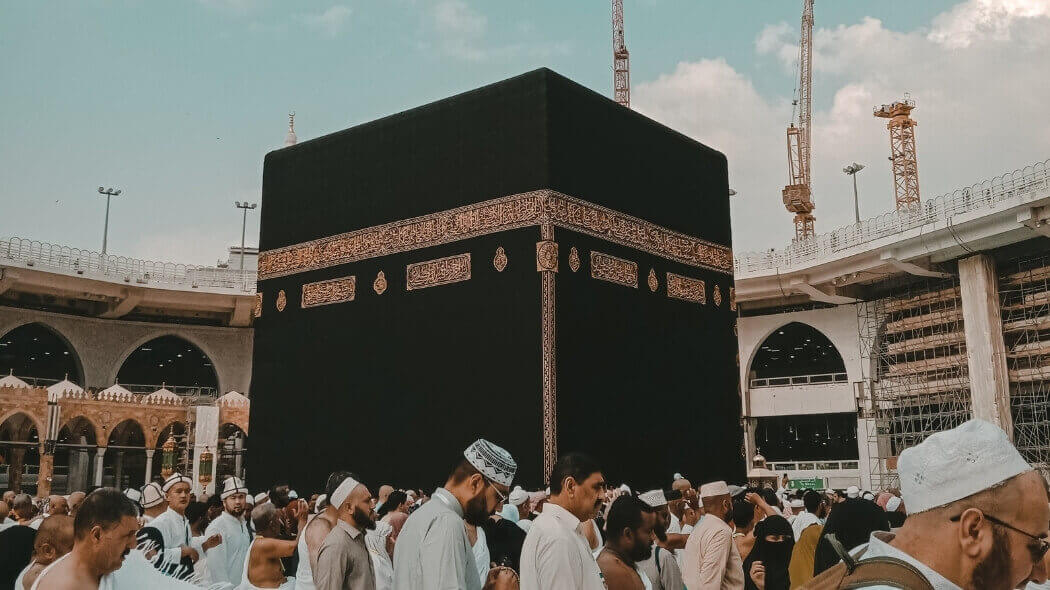As the profound heart of Islam, Makkah is a city that transmits divine peacefulness. It is where a huge number of Muslims from around the globe gather for Hajj and Umrah, looking for endowments and heavenly association. Past the magnificence of the Masjid al-Haram and the greatness of the Kaaba, Makkah is likewise home to an abundance of verifiable milestones and landmarks of Ziyarat – places visited for known recognition and reflection. Every one of these sacred spots hold a critical place in Islamic history, improving comprehension. We might interpret the confidence and extend our otherworldly journey. We should leave on a journey through the main 10 Ziyarat in Makkah, each with its own story to advise and endowments to present.
One of the verses in the Quran that can be related to the significance of Ziyarat (although not explicitly mentioned) is from Surah Al-Hajj (22:27):
“And proclaim to the people the Hajj [pilgrimage]; they will come to you on foot and on every lean camel; they will come from every distant pass -“
This verse, revealed to Prophet Muhammad (peace be upon him), signifies the importance of pilgrimage in Islam, which includes visiting holy and significant sites (Ziyarat). It emphasizes that believers from all over the world, regardless of their circumstances, will heed this call and undertake the journey, highlighting the universal appeal and spiritual significance of such visits.
So if you are planning to visit Makkah for Umrah or Hajj, it is important for you to visit the Ziyarat in Makkah, because that’s what strengthens your faith. Your heart will find peace the moment you enter these places.
What is the Meaning of “Ziyarat”?
In Islam, “Ziyarat” is an Arabic expression which signifies “visit.” It alludes to a type of journey to places related with Muhammad, his relatives (Ahl al-Bayt), his companions, or other loved figures in Islamic history. It can likewise allude to the actual sites. These destinations might include mosques, graves, war zones, mountains, and caverns.
Top 10 Spots & Landmarks: Ziyarat in Makkah
Have a glance of the spots & landmarks for Ziyarat in Makkah:
- Great Mosque of Mecca (Al-Haram Mosque)
- Kaaba
- Jabal Nour (Mountain of Light)
- Jannatul Mualla
- Cave of Thawr
- Birthplace of Prophet Muhammad
- Jabal Thawr
- Mount Arafat
- Masjid e Aisha
- Mina
1. Great Mosque of Mecca (Al-Haram Mosque)
The Incomparable Mosque of Mecca, also called Al-Haram Mosque, is something truly amazing. It’s the biggest mosque on the planet and the focal point of Islamic confidence. This lofty mosque encompasses the Kaaba, which is viewed as the most sacrosanct site in Islam.
Consistently, a huge number of Muslims from around the globe assemble here for the yearly Hajj, a strict obligation that each grown-up Muslim should embrace no less than once in the course of their life on the off chance that they are genuinely and monetarily capable.
The mosque has gone through a few extensions over the course of the hundreds of years to oblige the developing number of admirers, and today it can hold multiple million individuals.
Its magnificence, profound importance, and the feeling of solidarity it cultivates among Muslims universally make it a key Ziyarat in Makkah.
2. Kaaba
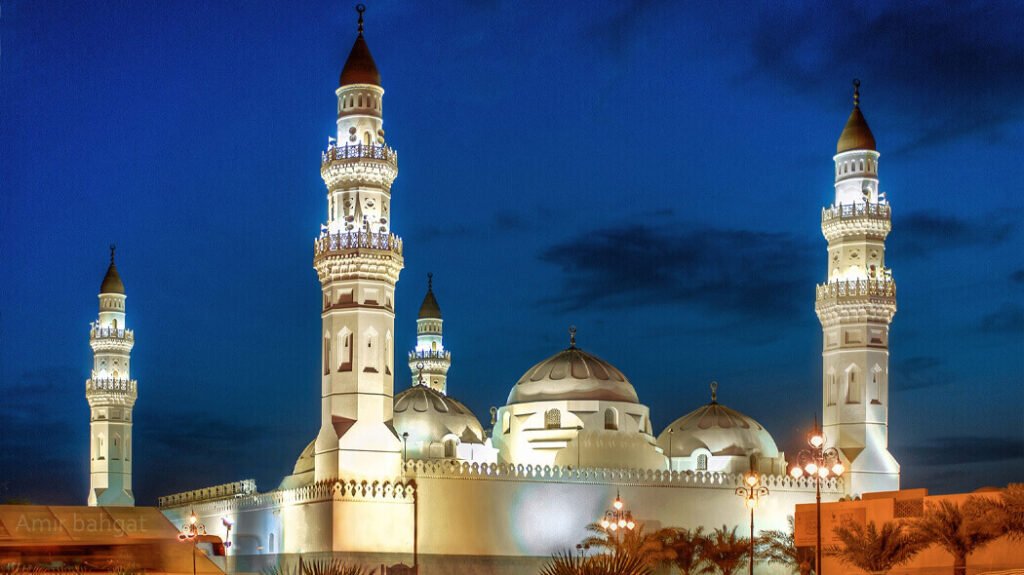
The Kaaba, likewise spelled as Ka’bah, is the most holy site in Islam. Situated inside the Incomparable Mosque of Mecca (Al-Haram Mosque), a cuboid design fills in as the point of convergence towards which Muslims all over the planet direct their prayers. The Kaaba is accepted to have been built by Prophet Abraham and his child Ishmael as a place of monotheistic love.
It is covered with a dark silk cloth known as the Kiswah, which is weaved with verses from the Quran in gold. One of the critical rituals of the Hajj journey includes strolling seven times around the Kaaba in a counterclockwise course, a custom known as Tawaf. Regardless of the large numbers who visit the site yearly, the inside of the Kaaba is seen by barely any, making it perhaps the most venerated and sacred site in Islamic practice. It is an obvious ziyarat in Makkah. You can’t miss this site!
3. Jabal Nour (Mountain of Light)
Jabal Nour, or the Mountain of Light, is a huge milestone in Islamic history. Situated in the Hejaz area close to Mecca, it is generally renowned for being the area of the Hira cave where Prophet Muhammad accepted his initial divine revelation through the Heavenly messenger Gabriel. This occasion denoted the start of the Islamic faith.
The mountain is appropriately named ‘Mountain of Light’ because of this profoundly enlightening occasion. It remains at around 640 meters tall and the journey to the top. Although testing, it is embraced by a huge number of explorers and guests every year who wish to visit the cavern and experience where Islam’s prophetic practice started. The view from the top gives a staggering display of the city of Mecca. It adds to its charm and makes it a significant Ziyarat in Makkah.
4. Jannatul Mualla
Jannatul Mualla, otherwise called Al-Hajun, is one of the oldest and most important cemeteries in Mecca. This memorable site holds the graves of numerous prominent figures in Islamic history. Among those buried here are Khadijah, the main spouse of Prophet Muhammad, and a few of his mates and relatives.
The burial ground is frequently visited by travelers who come to offer their appreciation during their time in Mecca. In spite of its authentic importance, Jannatul Mualla has gone through changes after some time because of development and extension works in the city. Regardless, it stays a powerful sign of the rich verifiable and profound tradition of Islam in Makkah.
5. Cave of Thawr
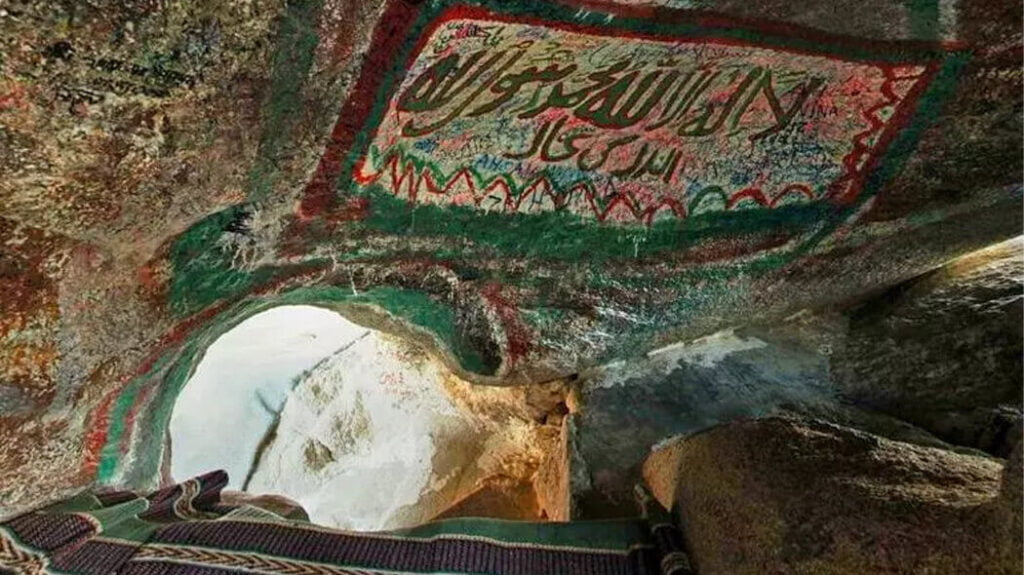
The Cave of Thawr, also called Ghar-e-Thawr, holds key historical importance in Islam. It is situated around 4 kilometers from the Blessed Kaaba in Makkah. The cave is known for being where Prophet Muhammad and his companion Abu Bakr looked for refuge for three days and evenings from the Quraysh clan during their relocation to Medina.
As per Islamic history, a spider spun a web at the entry of the cave and a bird laid eggs, which persuaded the Quraysh to think that nobody had entered the cave, in this way saving the Prophet and Abu Bakr from pursuit.
6. Birthplace of Prophet Muhammad
One of the main Ziyarat in Makkah is the Spot of Mawlid, which is the birthplace of Prophet Muhammad. It is found adjoining the city’s Suq Lail market. Prophet Muhammad is said to have been brought into the world at this huge area on the twelfth day of Rabi’ al-awwal, the third month in the Islamic calendar, in the year 570 AD.
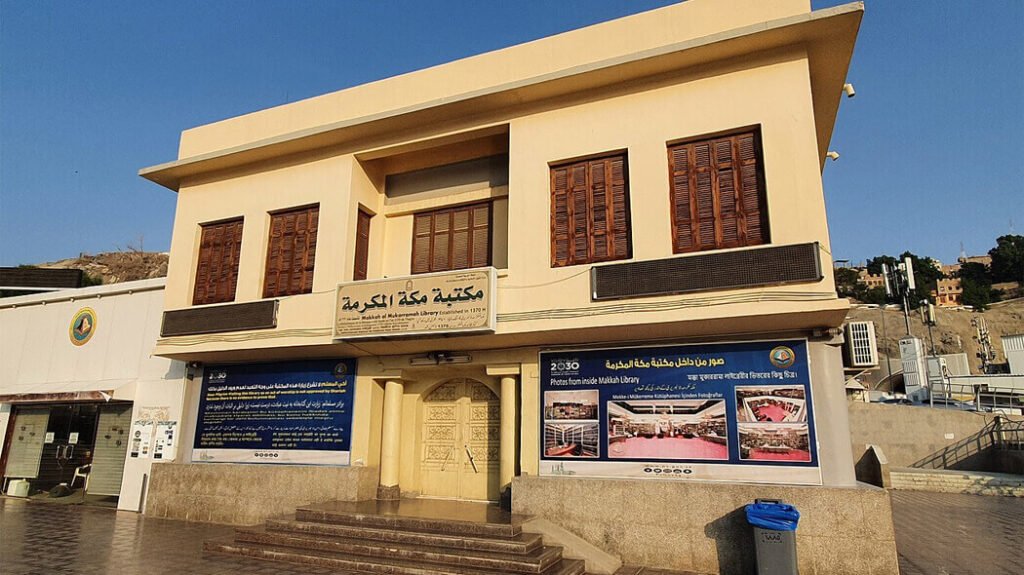
The structure is at present a library called “Maktaba Makkah al-Mukarramah,” lodging an assortment of Islamic writing and filling in as a spot to explore and look at materials. Regardless of the modification, Muslims overall keep on putting a lot of importance on this area, drawing guests who come to offer gratitude and ponder the Prophet’s presence.
7. Jabal Thawr
Jabal Thawr (Mountain of the Bull) is an eminent mountain in Mecca, Saudi Arabia. It’s known for its huge historical role in Islam. The mountain is generally renowned for housing the Cave of Thawr (Ghar Thawr), where Prophet Muhammad and his friend Abu Bakr stowed away from their persecutors, the Quraysh clan, during their movement to Medina.
8. Mount Arafat
Mount Arafat, also called Jabal al-Rahmah (Pile of Kindness), is a stone slope situated in the plain of Arafat, roughly 20 kilometers east of focal Makkah, Saudi Arabia. It holds great importance in Islam because of its relationship with the Day of Arafat, which happens during the yearly Hajj journey. It is a well known spot for ziyarat in Makkah.
As indicated by Islamic custom, the Day of Arafat is accepted to be the day when Prophet Muhammad conveyed his Last Sermon to the Muslims who had gone with him for the Hajj towards the finish of his life. It’s additionally accepted that here Adam and Eve were brought together on Earth in the wake of tumbling from Heaven, hence the name Mountain of Mercy.
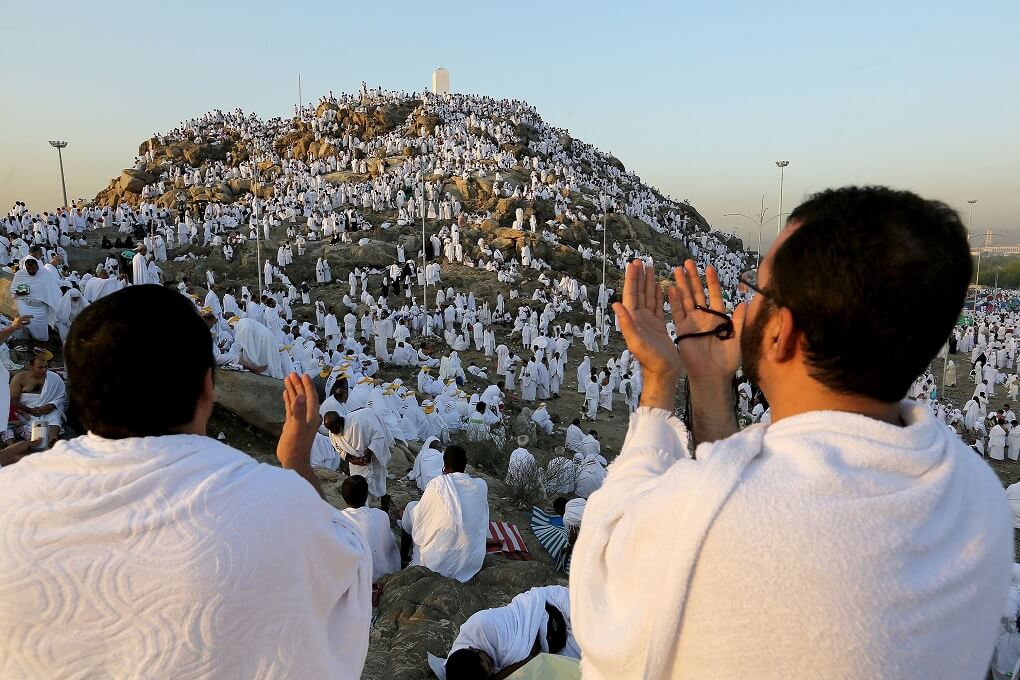
On the ninth day of Dhu al-Hijjah, the last month of the Islamic calendar, explorers gather at the plain of Arafat to pray and repent – a critical custom of the Hajj journey. This day is viewed as perhaps the main day in the Islamic calendar.
The actual hill of Mount Arafat is around 70 meters high. Despite its unobtrusive level, it stands out in the generally flat plain of Arafat. Explorers frequently climb this hill. However, it is not a required custom in Hajj and Umrah, but it is a known spot for Ziyarat in Makkah.
9. Masjid e Aisha
Masjid e Aisha, also called Masjid at-Tan’im, is one of the huge destinations of Ziyarat in Makkah, Saudi Arabia. It’s situated around 7.5 kilometers south of the Kaaba and is the nearest Miqat (station of Ihram) to Makkah.
The mosque holds authentic significance as it is named after Prophet Muhammad’s better half, Aisha. As per Islamic custom, during the Goodbye Journey, Aisha left the province of Ihram (a condition of custom virtue expected for Hajj and Umrah) because of her menstrual cycle. At the point when she was cleaned, the Prophet trained her sibling, Abdur-Rahman canister Abu Bakr, to take her to Tan’im (presently the area of Masjid e Aisha) to reappear Ihram and perform Umrah.
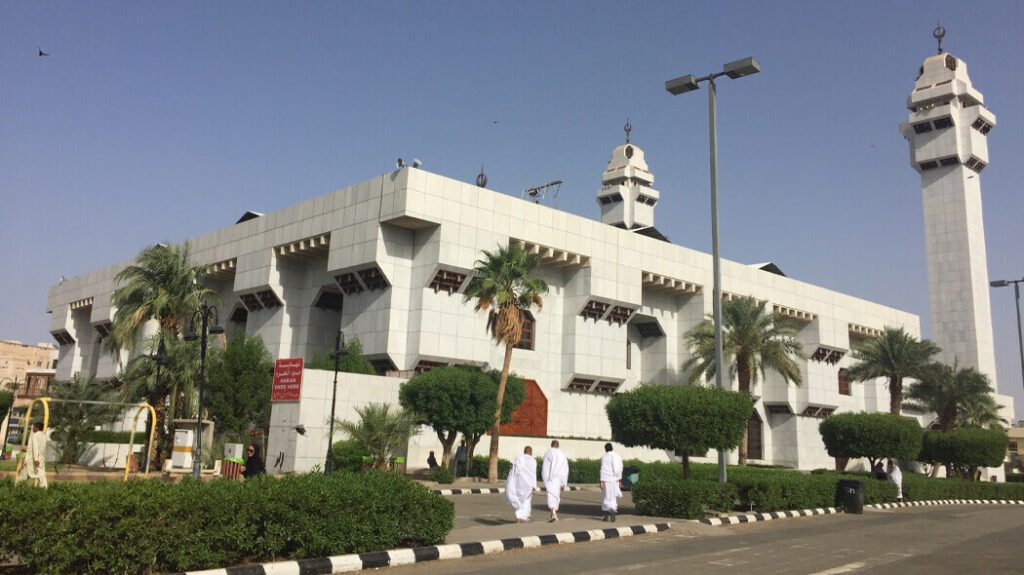
Today, the mosque fills in as a Miqat for those living in or around Makkah planning to perform Umrah. Travelers frequently visit this mosque, go into Ihram (the consecrated state), and afterward return to Makkah to play out the customs of Umrah. The mosque is huge, perfectly developed, and can oblige an impressive number of admirers.
10. Mina
Mina, also called the Tent city, is a significant piece of the Hajj journey and is one of the huge destinations of Ziyarat in Makkah, Saudi Arabia. It’s situated around 5 kilometers east of the Blessed Kaaba.
During the Hajj, travelers go through a day and evenings in Mina inside uniquely pre-arranged tents, which gives it the name “Tent City”. This stay in Mina occurs on the eighth day of Dhu al-Hijjah (the day preceding the day of Arafat) and afterward again from the tenth to the twelfth or thirteenth day of Dhu al-Hijjah.
One of the primary customs acted in Mina is the emblematic Stoning of Satan (Ramy al-Jamarat). Pioneers throw stones at three walls, known as Jamarat, in the order of smallest to largest, representing the dismissal of malevolence. These walls address the allurements of Satan when he attempted to discourage Prophet Abraham from completing God’s order to forfeit his child.
Kindly note that while Mina holds incredible importance during the Hajj time frame, it isn’t ordinarily visited beyond this time as a component of Ziyarat, as there is no particular strict legitimacy to visiting Mina beyond the Hajj period.
Some Other Spots You Can’t Miss for Ziyarat in Makkah!
1. Masjid Jinn
Masjid Jinn, also called the Mosque of the Jinn, is a famous mosque in Mecca, Saudi Arabia. It is situated close to the Jannat al-Mu’alla graveyard, southeast of the Masjid al-Haram.
The mosque holds a one of a kind importance in Islamic custom for ziyarat in Makkah. As per the Quran in Surah Al-Jinn (Section of the Jinn), a gathering of jinn once arrived at this area to hear Prophet Muhammad recite the Quran. Subsequent to hearing it, they embraced Islam. The mosque was subsequently developed at the site where this occasion occurred.
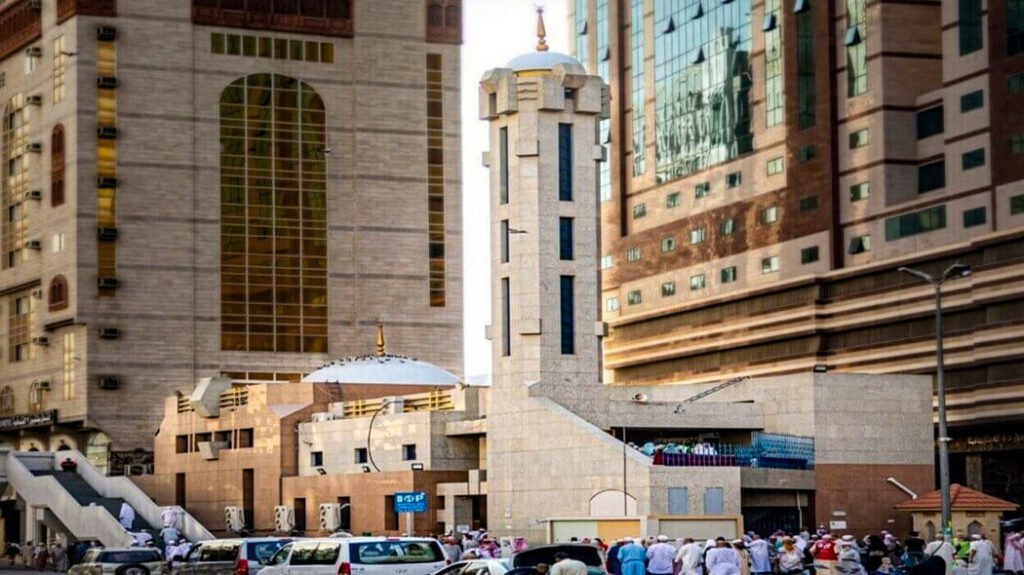
As far as design, Masjid Jinn is generally little contrasted with different mosques in Makkah however has been revamped and extended over the long run. It keeps a straight yet rich structure, with curves and segments that are normal for Islamic engineering.
Like different spots of love, while visiting Masjid Jinn, one ought to notice proper behavior, including wearing unobtrusive clothing and keeping a deferential way.
2. Makkah Museum
The Makkah Museum, otherwise called the Exhibition hall of the Two Blessed Mosques Architecture, is a prominent social foundation in Mecca, Saudi Arabia. It’s arranged close to the Masjid al-Haram, the holiest mosque in Islam.
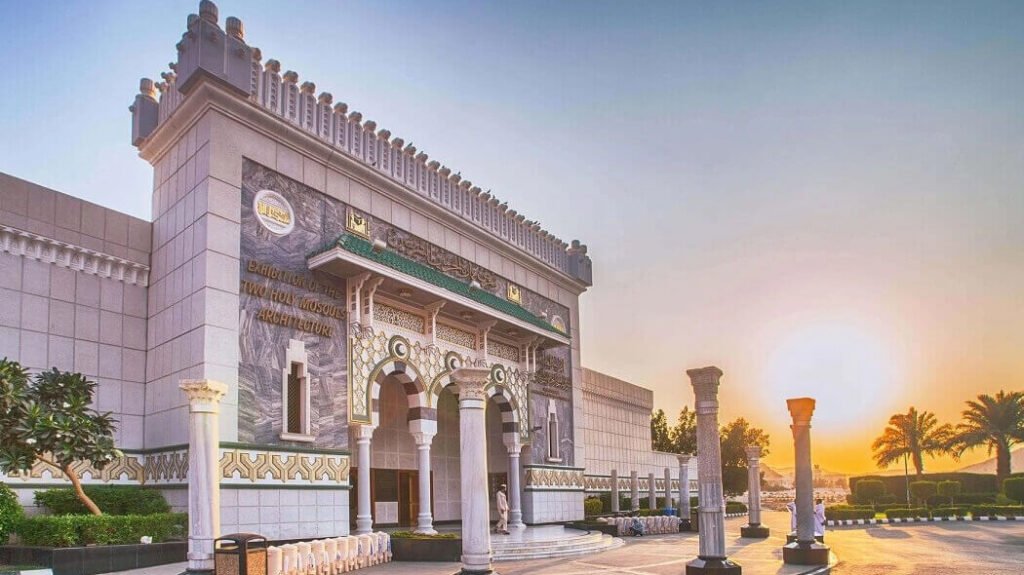
The gallery includes a rich assortment of relics, models, and displays that give experiences into the verifiable turn of events, extension, and engineering of the Masjid al-Haram in Mecca and the Prophet’s Mosque in Medina. The displays cover various periods, from the hour of Prophet Muhammad to the current day.
Final Words!
“Let your heart and soul feel the peace and blessings of sacred sites, giving you the flashbacks of Islamic history, greatness intervene, and purity all over.”


